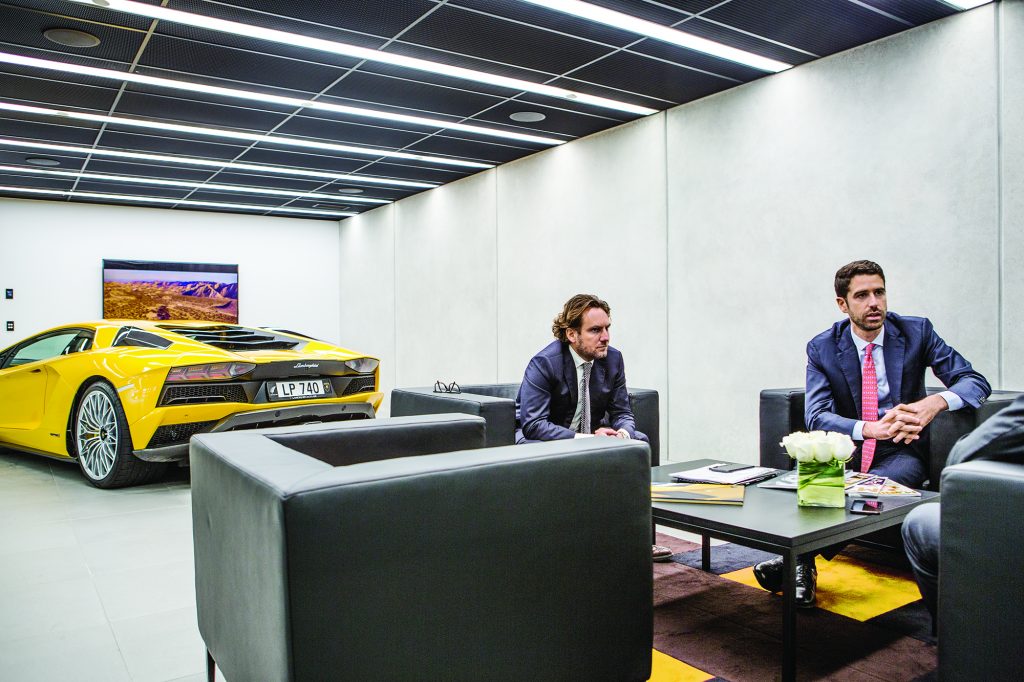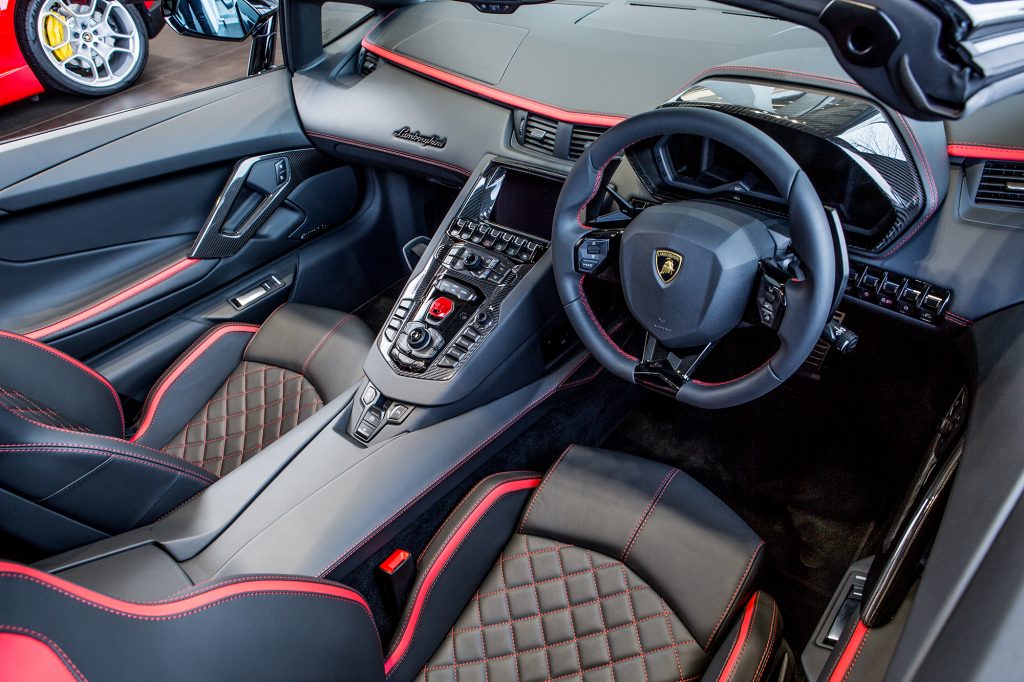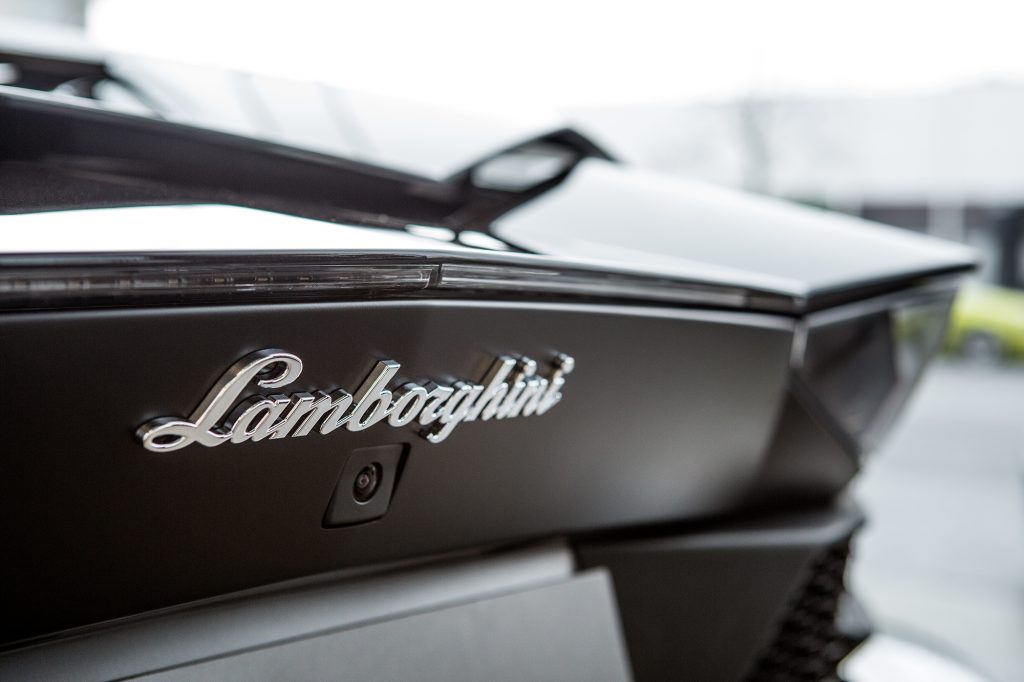Leading A Legend – A Word With the Lamborghini CEO
As lamborghini’s new Asia Pacific Ceo Matteo Ortenzi points out, the automotive industry is currently experiencing one of the most exciting times within its history. New technology, consumer expectations and behaviours and trends are creating a pace of change like never before. For a man leading the Asia Pacific region of one of the world’s most beloved supercar brands things are even more exciting as they are about to launch the Lamborghini Urus, the brand’s first suv.
We talk to Matteo about his rise through the company, the future of the brand and the possibility of an electric Aventador.
Congratulations on the role, how have you found it so far?
I am excited because I’m starting a new experience and this is complementary to the other things I did in my career. I started at Lamborghini in 2004 starting in finance. I had a career in controlling, before going into product management. So you can understand these are really quite central to the function in the company.
Now I have this opportunity to see also the other side, so the market and getting closer to the final customer. This is something that I like a lot because it was something that I was always looking from a side view, from the centre to the market, and now I have the opportunity to see from the other way around and it’s quite interesting.
And in terms of the market side, that central role that you’ve had, does that change the way that you will view marketing do you think? That understanding of economics?
No, because being so small, the voice of the customer is very strong even if you are in finance because you have a very close connection with our marketing department and sales department so there is no issue about that.
For sure you have a different view because you are the first touch point in many ways. I’m in touch with press, speak about our dealers. It’s a more direct message that you’re receiving now. Also, the way you are communicating that seems to be important and makes a difference.

Since 2004, do you think that the voice of the market is changing? Do you notice that there’s a change in terms of what consumers are asking for? Is it a generational change between say baby boomers and Gen X and millennials in terms of what’s important to people?
In the basic things, it’s not. The customer wants a perfect product from us. Our discussion with them has to revolve around this, but the way we can do this has completely changed.
I’m just thinking the tools we have and the tools we had. Think about Instagram, think about social media; it’s a way to communicate to our customer and we have to do properly. You cannot take for granted what kind of message we are providing on social media. This is something we have to take care and this is what we are doing also.
And that feedback, with social media, does that feedback loop change?
Yes, that is quicker. It’s less controlled in a way because it’s quite direct. It is very good because we have no filter, you listen to the customer voice but on the other side it’s so direct it has to be managed properly. We have to manage in a very fast way and a very active way.
In terms of technology from a product perspective, how have things changed in terms of what you’re able to do, even since 2004?
The way you can bring technology into the product has completely changed. We have to always put the best possible technology into our cars.
We see our Research & Development Department as able to provide us with a form of art because what you see in our product is the balance between the different things. That is the most difficult things in building the car.
Everybody can build a very fast car. Everybody can do a very high powered car. Just a few people can do all the things together in one car because the most important thing is balance in a sportscar. I am referring also to Urus that’s a sportscar with an SUV shape.
The most difficult thing is to put all together these things in one car. This is what we are doing in a very good way and we are proud about our products.

Just going back in terms of market feedback, was the Urus a response to that? Does it change the accessibility of the brand and open it up to a new audience?
It is and it’s a huge opportunity. This is what we wanted and we achieved it. Around 70% of the orders that we are getting for the Urus are coming from different brands. As you can understand, it’s a huge potential for us because we are allowing other people that have not experienced our brand before to have the opportunity to also start looking at the Huracan and Aventador.
It also changes the way we need to setup our dealer networks. Think about a Urus customer that is using the car day by day; the ultimate mindset of the people working in our workshop has to change completely, it’s different work. We have to be faster, we have to have a Urus car for this customer if they need to leave the car here one day. This is something that we prepare for properly.
Interesting. And as you say, the service and the follow-up is a completely different dynamic when you have someone using a car as a daily driver. Was that a hard transition for the dealer networks to make to gear up towards that?
Yes, especially in the beginning. They saw us as being a bit demanding, but just because we were already knew the product that was coming and they were still not seeing it. We anticipated and we were telling guys ‘You have to be ready because something big is coming’.
On one side, you have somebody speaking to you, on the other side when you have to experience the product. This was done already in the dynamic launch we had in Rome. I was quite happy because when I saw the faces of the press and the dealers, I was sure that we had done the right job because they were amazed at the potential of this car.
A lot of times new technology and innovation that you would put into some of the most expensive models would trickle down, do you think it works the other way in this case where you say develop the V8 turbo and you have some of the insights from using vehicles as a daily driver? Will that also go into more expensive models?
It’s a very important question and it’s very easy to answer because we will use the best technology to do the car that for us is the perfect car. On the Urus there are different needs, you need huge torque because it’s a big car and that’s why we use V8 turbo. I think this freedom to choose the best technology for the right purpose is what is steering us and will steer us to the future.
Something can change, technology is always evolving. It would be stupid to fix exactly what we have to have for the next 5-10 years. We just have to be quite clever and reacting. If you see something that is popping up, we need to update our products.
But at the moment, if you tell me which is the best technology you can have to do a sportscar and SUV, look at our lineup and the answer is there.

I’ll ask you a stupid question then, what sort of technology do you think you’ll be using in 5-10 years?
It’s not a stupid question at all. I would like, if I answer you, to be sure about the answer because I think we are living one of the most interesting periods within the automotive industry. Nothing is fixed. There are big players starting to invest real money on things but nobody is 100% sure that this is the right track. It’s quite dangerous in a way and I think you need to be quite well connected to market. You need to be part of the automotive business trend discussion and this is a big challenge for the big OEM.
But think about us; it’s not like we can invest in three or four things, hoping that one of them is fine. You must be even more concentrated and be sure in what you are doing. I know that electrification is an issue, not will be, it is an issue. It will come, it depends how and when.
I’ll give you an example. We know that most likely in the future, we will have hybrid cars in the sportscar. This is because there is a clear market trend in the regulation field, but if you’re asking me when you will go and do this step, I can answer you when the technology is ready for us because we will never compromise about emotions and performance.
Think about an electric car, the car at the moment is not ready to be a Lamborghini electric car because of the duration of the performance, because of the emotion we are able to provide to our customer. We will never trade-off on these things, we will never compromise. I see the electric car not in the five year range, but more in the ten year range in general for sportscar.
It’s interesting you talk about emotion because Lamborghini is all about emotion. Electricity and electrification seems very cold, do you think there will ever be the ability to be that emotion that we see in something like a V12 or a V10?
This will be our task. For certain there will be a change also in the perception of the emotion, most likely this will be provided in a different way to the customer but you need to provide emotions. It will be not a Lamborghini if you have a cold car, so we are different.
If we were having this discussion in the 80s and you were telling me about the future and how we would have to have catalytic convertors and have to respect noise regulations, I would have asked then how you could possibly bring emotion to the car? But in the end we did it.
Drive an Aventador today and when you get out of the car, I promise you are smiling. This is what we will do also in the future with electrification. How we will do it I cannot answer you, but be sure that our first target is to provide emotion and this we will do somehow.
You can be Christiano Ronaldo but if you have monkeys around you, then you cannot win the game.
If we did go back to the 80s, you were younger, what was the car that you had on your bedroom wall as a child?
This is a tricky question because I’m a car lover and I cannot answer with a brand. I’m really in love with a lot of beautiful cars but I tell you, at that time I was always looking at Diablo.
I remember in those years there was the Diablo and the F40 from Ferrari and Diablo was declaring 325km per hour and the F40 was 324km. I was always looking for the best. I was really in love with the Diablo, it’s a car I love but for me, the perfect car is Miura. It’s the most beautiful car ever built in the world.
I’m lucky that it is in our brand but it’s true. Even if I worked in another sector, I would always say that the Miura is the most beautiful car. I had also the very good opportunity to meet Mr Dallara in my career so for me, it was a dream to speak to somebody that created this miracle.
I’m quite happy about my job for these reasons. For me, it’s the perfect connection between my passion and my job.
When you were studying economics, did you ever imagine that you would be working for Lamborghini or you would be working within the automotive field?
I would lie if I told you Lamborghini but I was just hoping that I could work in automotive. I was never dreaming of something so good like Lamborghini.
When I was a child I was always reading car magazines. I was in love with cars and then when I started my studies, it was with this clear idea and then I did my master in automotive business because I wanted to work in this sector. The opportunity to enter the Lamborghini family was a dream day.
Going back to that childhood, what is it about a beautifully sculptured vehicle like that that can inspire and makes us look at it and feel something, even if it’s sitting stationary?
The word is aspirational; we represent a dream for a lot of people. This is wonderful but it’s a big responsibility. Being aspirational, you have to take care that you are consistent on what you are doing and not just by product, but also by the brand you have around the product.
This is what we are really taking care about in these days. We believe that we need to communicate these things to create the whole Lamborghini experience around the product that is not just a car.

When you’re talking about everything globally, even Asia Pacific, there are nuances in each part of the region. How would you describe New Zealand?
New Zealand is a funny market for me because it’s very much a new one and customers really love their cars. This is a very good environment and it is reflective to luxury.
If you see the Oceania overall luxury market for sportscars, it is 2.5%, compared to the worldwide market of something more than 1% for the complete car market.
What’s the best piece of advice you’ve been given along the way?
That’s a good question. The only advice I can give is one I’m using with everybody; it was not a professional one, it was my grandfather. He was always saying to be yourself. If you’re trying to be somebody else, the truth will always show up.
It doesn’t mean that you don’t have to change but you cannot show yourself in a different way than what you are. If you want to be more, then study, prepare yourself, become a bit more and then show yourself as a bit more than you were before.
Do you sense that business is changing in terms of culture?
For sure. Everything is very direct now, like we were discussing before in regards to social media; the big thing that it’s doing is cutting filters and when you do that, the consistency and the authenticity of the people and brands becomes the key points.
How would you describe yourself as a leader?
It seems like a prepared answer because everybody says it’s about teamwork and all this stuff but I believe it. I like to create the team.
You can be Christiano Ronaldo but if you have monkeys around you, then you cannot win the game. I like always to have clever people around me that are asking the right questions to me and to the other guys on the team, because only like this, and with some conflicts, you can grow.

